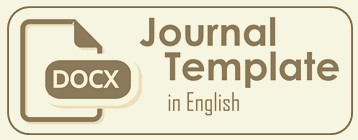Enhanching Speaking Ability on Students Of University Of Asahan Through Flash Cards
DOI:
https://doi.org/10.55266/journaletanic.v2i2.387Keywords:
speaking ablity, flash cards, English class, Flashcards, Speaking class, University of Asahan information Technology studentsAbstract
The research's objectives are to determine whether and to what extent flashcards can improve speaking abilities in University of Asahan information technology students and to describe the classroom environment when flash cards are used in speaking classes. Class action research is the research methodology used. The researcher employed questionnaires, observations, interviews, document analyses, and tests to gather the data. Prior to doing research (pre-test) and following the use of flash cards (post-tests 1 and 2), the researcher administered the tests. To determine the improvements in speaking skills among the students, the mean results from each exam were compared. The improvements in the pre-test mean score of 49, the cycle 1 post-test mean score of 75, and the cycle 2 post-test mean score of 79 show the advancements. In addition, the class environment was improved because: 1) students participated actively; 2) speaking class participation was equal; 3) students were encouraged to speak English much more than Indonesian; and 4) student interaction was greatly improved
References
Aba La. “Flashcards as A Media in Teaching English Vocabulary.” Jurnal Bahasa (e-Journal). August 2019. Volume 4, No 2.
Barkley, Elizabeth F. (2005). Collaborative Learning Techniques. San Francisco: Jossey-Bass.
Brown, H. Douglas. (2004). Language Assessment: Principles and Classroom Practices. San Francisco State University: Addison Wesley Longman, Inc.
Budhi, R.K., Prayitno, A., Ricardo, R., Leonardo. O.P. 2019. “The Making Of Flash card and Augmented Reality-Based Application as a Learning Media for Special Needs Children”. TRANSFORMATKA. Vol. 16 (2): hal. 135-143. Tersedia : http://journals.usm.ac.id/index.php/transformatika/arti cle/view/923 (Diakses 26 April 2020, 13.00 WIB)
Burns, Ann. (1999). Collaborative Action Research for English Language Teacher. Cambridge: Cambridge University P
Chang Tsai, C. 2018. “A Comparison of EFL Elementary School Learners’ Vocabulary Efficiency by Using Flashcards and Augmented Reality in Taiwan”. The New Educational Review. Vol. 51 (1): hal. 53-65. doi 10.15804/tner.2018.51.1.04
Chen, R.W., Chan, K.K. 2019. “Using Augmented Reality Flashcard to Learn Vocabulary in Early
Childhood Education”. Journal Of Educational Computing. Vol. 57 (7): hal. 1812-1831. doi : 10.1177/0735633119854028
Craig, A.B. 2013. Understanding Augmented Reality : Concepts and Applications. USA : Elsevier.
Dijaya, R., Maulidah, N.M., Abdullah, D. 2018. “Flashcard computer generated imagery medical plant for orthopedagogic education”. MATEC Web of Conferences Vol.197. doi : 10.1051/matecconf/201819715005
Fulcer, G. (2003). Testing Second Language Speaking. Great Britain: Pearson Education Limited
Geroimenko, V. 2019. Augmented Reality Games I : Understanding the Pokémon GO Phenomenon. Swizerland : Springer.
Hopkins, David. (1993). A Teacher’s Guide to Classroom Research. Buckingham, Philadelphia: Open University Press
Hutabarat, M. S., Siregar, R. K. and Harahap, N. (2024) “Enhancing Speaking Proficiency through TikTok Duet Interactions among Eighth Grade at SMP Negeri 4 Padangsimpuan”, ETANIC Journal Of English Language Teaching And Applied Linguistics, 2(1), pp. 43–55. doi: 10.55266/journaletanic.v2i1.370.
Natasya, A., Maharani and Harahap, T. R. (2023) “Enhancing Vocabulary Mastery through Song-Based Learning Among Seventh-Grade students at SMP Negeri 4 Padangsidimpuan”, ETANIC Journal Of English Language Teaching And Applied Linguistics, 1(2). doi: 10.55266/journaletanic.v1i2.374.
Nursaima Harahap (2023) “The Correlations Between Students’ Vocabulary Mastery And Speaking Skill To The Tenth Grade Students Of Smk Negeri 1 Angkola Timur”, ETANIC Journal Of English Language Teaching And Applied Linguistics, 1(1), pp. 1–9. Available at: https://jurnal.radisi.or.id/index.php/JournalETANIC/article/view/255.
Purnaningsih, Reni, et al. “Improving Students’ Speaking Ability Through Talking Chips.” English Education: Jurnal Pendidikan Bahasa Inggris Universitas Sebelas Maret, vol. 2, no. 3, 2014.
Ritonga, S. N. (2024) “Flashcards as a Tool for Vocabulary Enhancement: A Study on Tenth Grade Students at SMA Negeri 1 Padang Bolak Julu”, ETANIC Journal Of English Language Teaching And Applied Linguistics, 2(1), pp. 19–42. doi: 10.55266/journaletanic.v2i1.369.
Safar, A.H., Al-Jafar, A.A., Al-Yousefi, Z.H. 2017. “The Effectiveness of Using Augmented Reality Apps in Teaching the English Alphabet to Kindergarten Children: A Case Study in the State of Kuwait”. EURASIA Journal of Mathematics Science and Technology Education”. Vol. 13 (2): hal. 417-440. doi : 10.12973/eurasia.2017.00624a
Schmalstieg, D., Höllerer, T. 2016. Augmented Reality: Principles and Practice. Boston : Addison-Wesley.
Silberman, Melvin L. (1996). Active Learning: 101 Strategies to Teach Any . Massachusetts, A Simon & Schuster Compan
Downloads
Published
How to Cite
Issue
Section
License
Copyright (c) 2024 Derliana Hasibuan, Harry Sambayu, Lisa Fitri Meidipa

This work is licensed under a Creative Commons Attribution-ShareAlike 4.0 International License.





